Sloped gardens present unique challenges—like soil erosion and difficult access—but they also offer dynamic opportunities to create visually stunning, multi-dimensional landscapes tailored to your space and style. Effective slope management typically involves a combination of hardscape elements (such as retaining walls, terraces, and pathways) and strategic plantings (including groundcovers, grasses, shrubs, and wildflowers) to stabilize soil and prevent runoff while maximizing usability and aesthetics. Incorporating features like built-in seating, water elements, and vertical gardens not only enhances function but also transforms otherwise awkward inclines into inviting outdoor rooms with distinct zones for dining, relaxation, and planting. From cost-effective DIY solutions to elaborate hillside terraces, the following 20 ideas will inspire you to embrace and elevate your sloped garden.
1. Terraced Retaining Walls
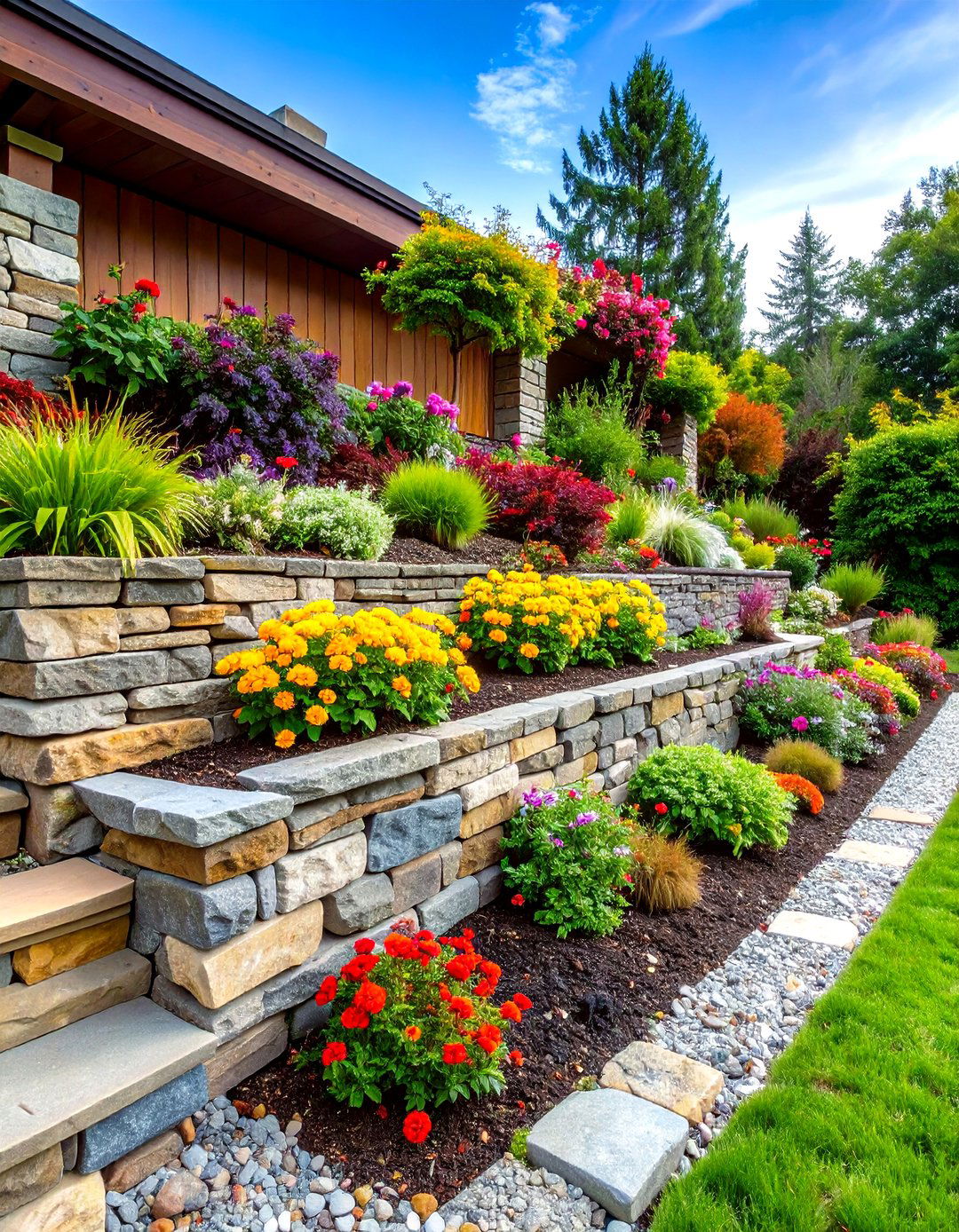
Building terraced retaining walls is one of the most effective ways to transform a steep slope into usable flat areas for planting, seating, or paths. Materials such as natural stone, concrete block, or timber can be stacked in tiers, each capped with soil and plantings to create layered garden “rooms” that step down the hillside. Proper drainage behind the wall (using gravel backfill and drain pipes) is essential to prevent pressure buildup and wall failure. Terracing not only controls erosion but also allows for easy access to each level, making maintenance and planting more manageable.
2. Boulder Clusters
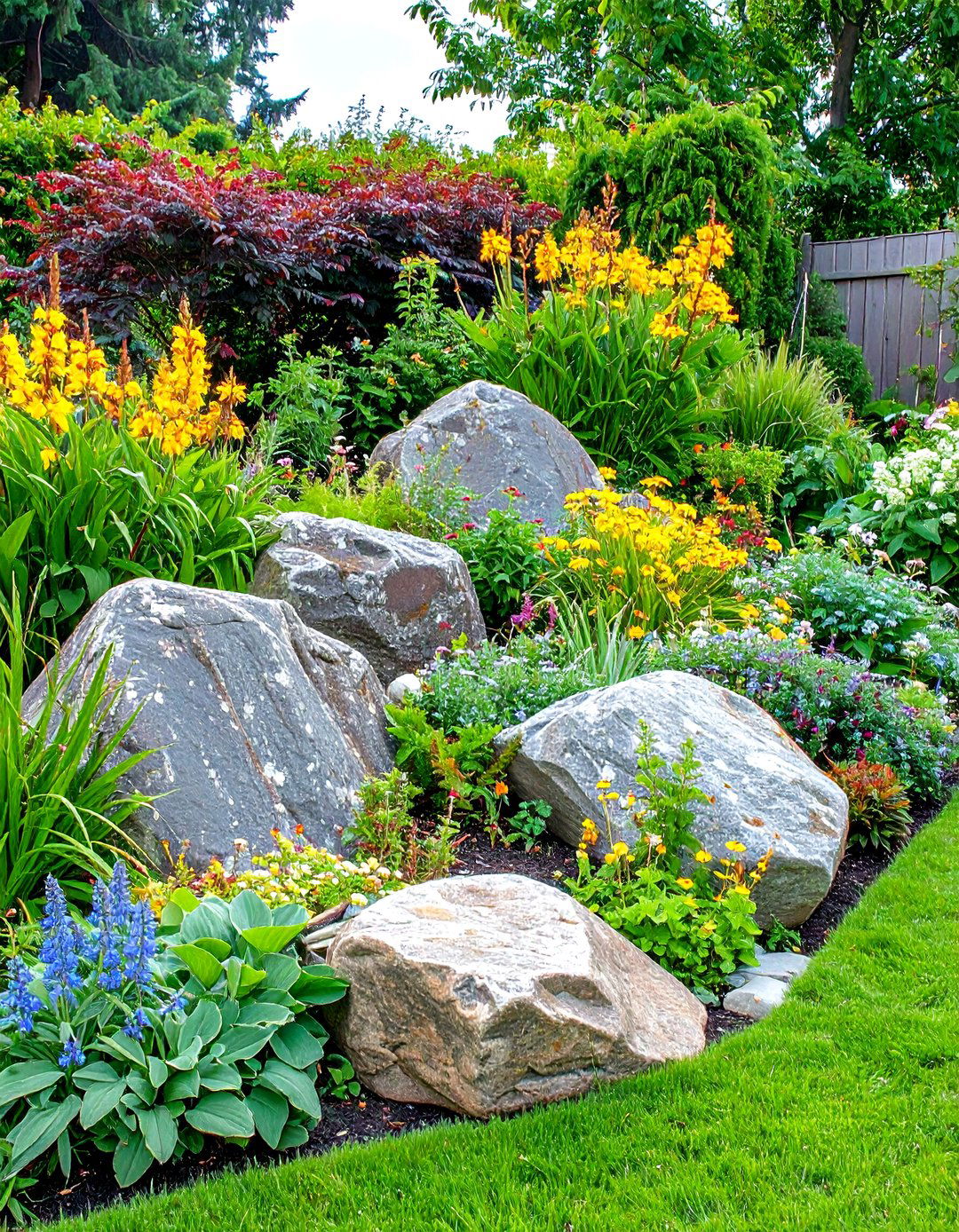
Integrating large boulders into your sloped garden anchors soil pockets and adds a natural, rugged aesthetic. Cluster rocks in small groups, staggering their placement rather than lining them up for an organic look; bury at least one-third of each boulder to ensure stability. Soil can be packed around these anchor points and finished with cascading groundcovers or petite perennials to soften rock edges and hide gaps. This low-maintenance solution helps interrupt water flow while serving as focal features that break up monocultural plantings.
3. Groundcover Carpets

Groundcover plants like creeping phlox, sedum, and sweet alyssum form a protective living carpet over slopes, reducing erosion risk by holding soil particles together. These plants spread quickly to fill spaces, creating colorful seasonal blooms and year-round greenery without the labor of mowing or weeding. For woodland slopes, consider shade-tolerant groundcovers such as lamium or vinca minor, which thrive under tree canopies and require minimal intervention. By treating your slope as a living mulch, you enhance soil stability and visual cohesion across the incline.
4. Multi-Level Decks
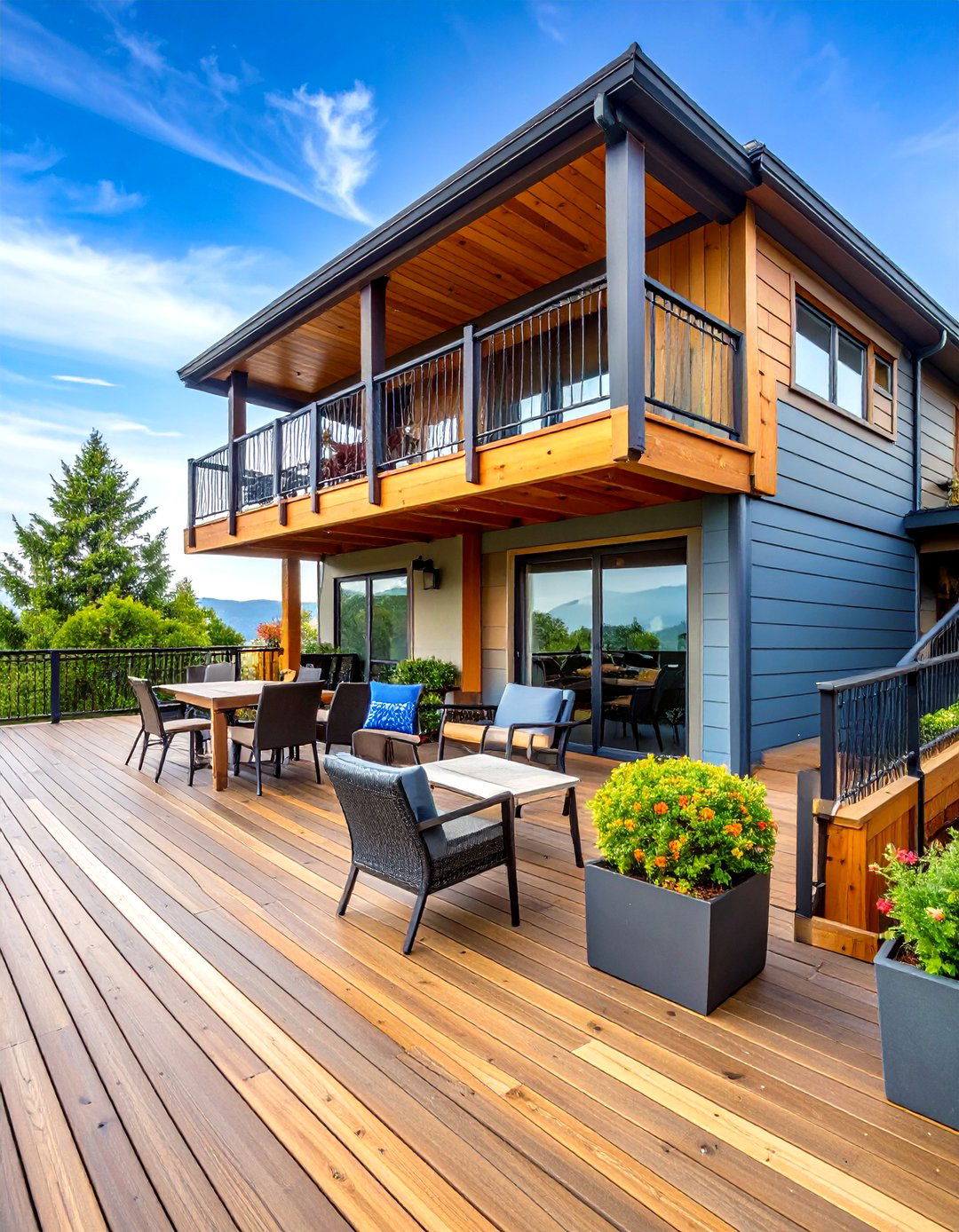
A multi-level deck maximizes entertaining space on a slope by creating distinct levels for lounging, dining, and planting. Each deck tier can align with interior floor heights, providing seamless indoor-outdoor flow and panoramic views; railings and built-in planters on deck edges frame the scenery while ensuring safety. Incorporate stairs or ramps between levels, using materials that complement the home’s exterior—composite decking for low maintenance or tropical hardwoods for a luxe finish. Lighting along steps and decks enhances usability after dark and highlights architectural details.
5. Rock Gardens
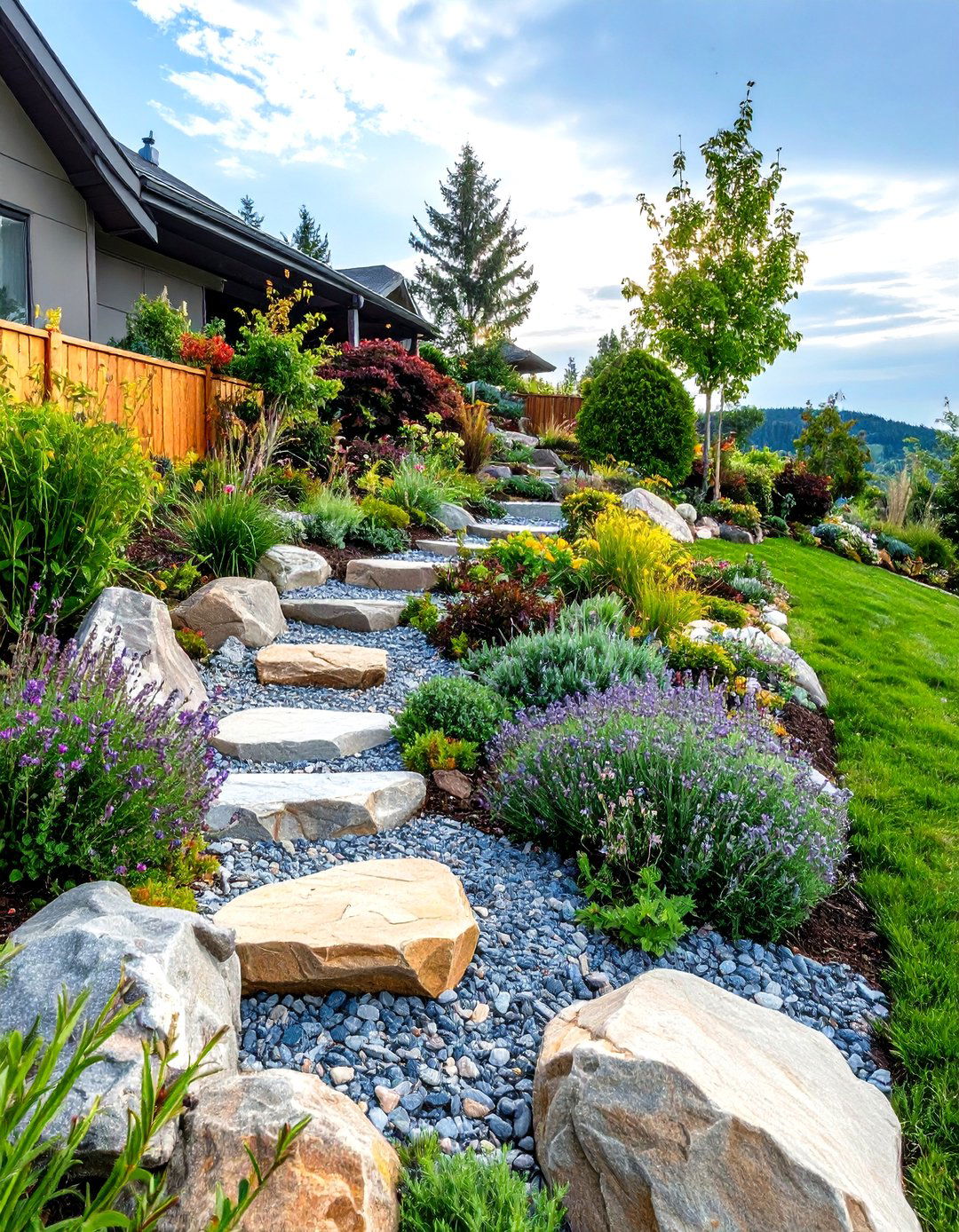
Transform portions of the slope into a rock garden by strategically placing stones and planting alpine species like creeping thyme, rock cress, and dwarf conifers. Gravel or pea shingle between rocks provides excellent drainage, crucial on slopes where water collects quickly. Select rock shapes and sizes for varied texture—flat slabs can double as stepping stones, while boulders anchor the composition. Over time, self-seeding perennials fill crevices, creating a naturalistic, low-water landscape that thrives in challenging hillside conditions.
6. Wildflower Meadows

Allow sections of your slope to naturalize with native wildflowers—such as black-eyed Susans, coneflowers, and coreopsis—that provide seasonal color, support pollinators, and require little upkeep once established. Sow a meadow seed mix suitable for your climate after clearing existing vegetation and lightly tilling the topsoil. Wildflower slopes not only prevent erosion but also create a soft, meadow-like aesthetic that changes through the seasons—from early blooms to late-season grasses.
7. Hügelkultur Beds

Hügelkultur involves constructing raised planting beds from logs, branches, compost, and soil; on slopes, these mounds should be oriented on contour to capture moisture evenly. As the wood decomposes, it slowly releases nutrients and retains water, creating fertile, well-drained planting zones ideal for vegetables and perennials. Beds approximately 3 feet high and several feet wide reduce the effective slope angle and form natural swales that slow water runoff, mitigating erosion.
8. Upcycled Tire Terraces
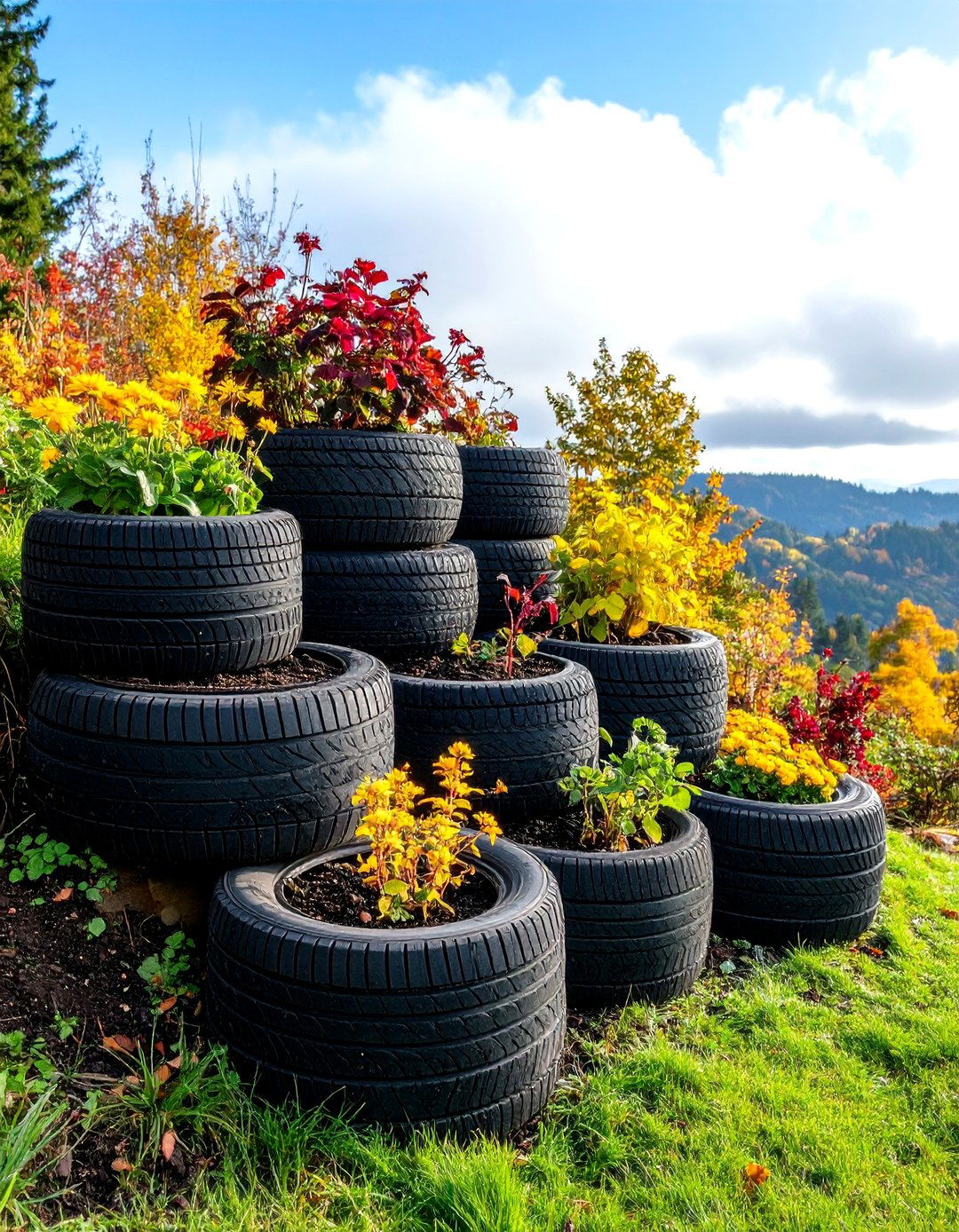
For a budget-friendly terrace solution, use old tires stacked and filled with soil to create compact, circular beds along the slope. Arrange tires in stepped rows, backfilling with a mix of compost and topsoil; edge each layer with smaller stones or mulch to secure the soil. Plant annuals, herbs, or succulents in the tire “planters” for vibrant pops of color; this DIY approach repurposes waste materials while stabilizing the slope economically.
9. Winding Pathways

Instead of a direct, steep ascent, carve a gently curving pathway that zigzags across the slope, reducing incline severity and adding visual interest. Lining the path with low-maintenance shrubs or perennials softens edges and creates a sense of enclosure, while step stones or gravel maintain grip in wet weather. Each path turn can reveal a new garden vignette—benches, statuary, or container plantings—encouraging exploration and breaking up the slope’s monotony.
10. Integrated Water Features
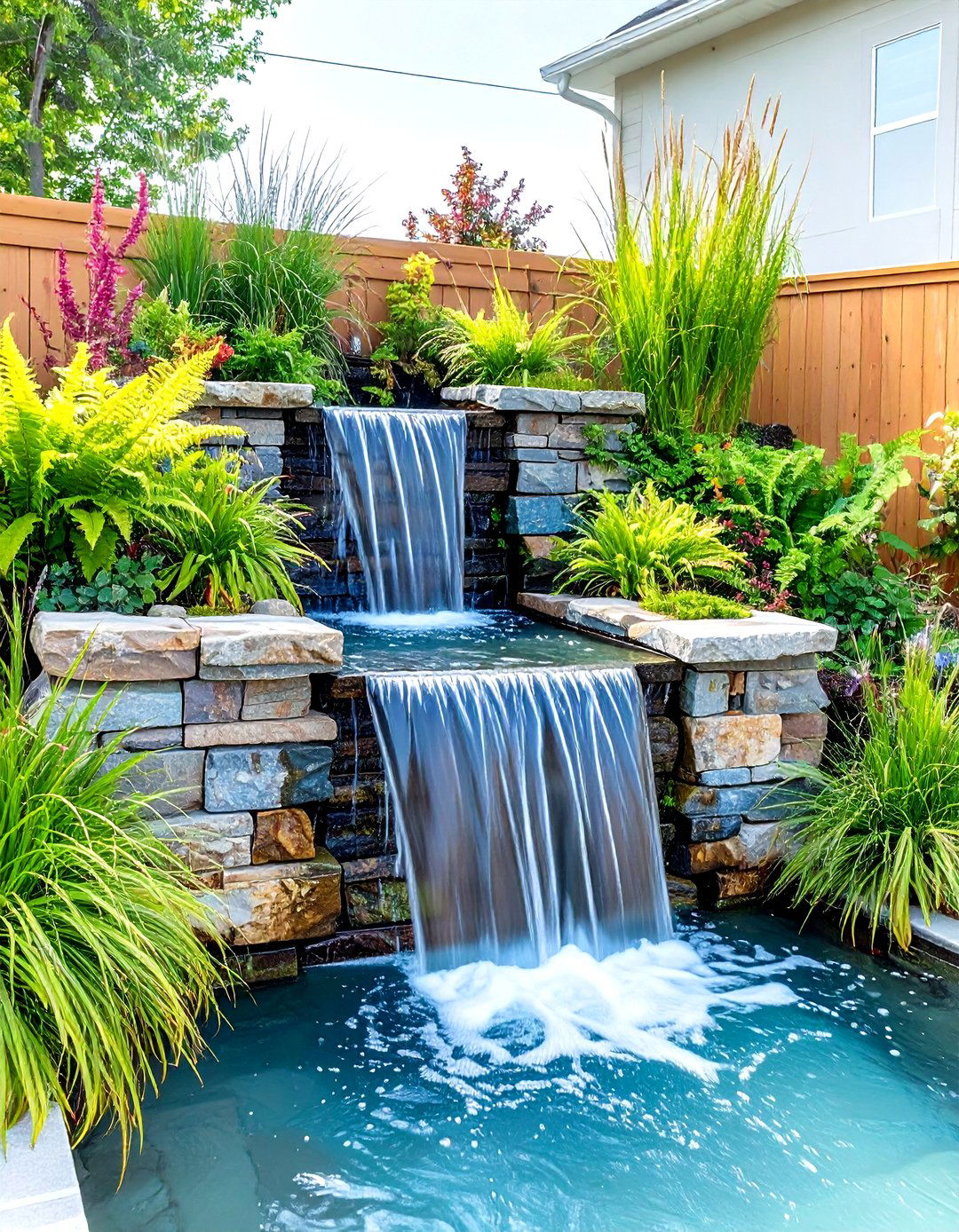
Incorporate cascading water features—like tiered ponds or simple rock spillways—into retaining walls to blend functionality with sensory appeal. A recirculating pump moves water from the bottom reservoir to the top, creating soothing sounds and visual movement as water trickles down each level. Surround the feature with moisture-loving plants—ferns, astilbes, and sedges—to soften hard edges and draw wildlife; include lighting for evening ambiance.
11. Planting Pockets
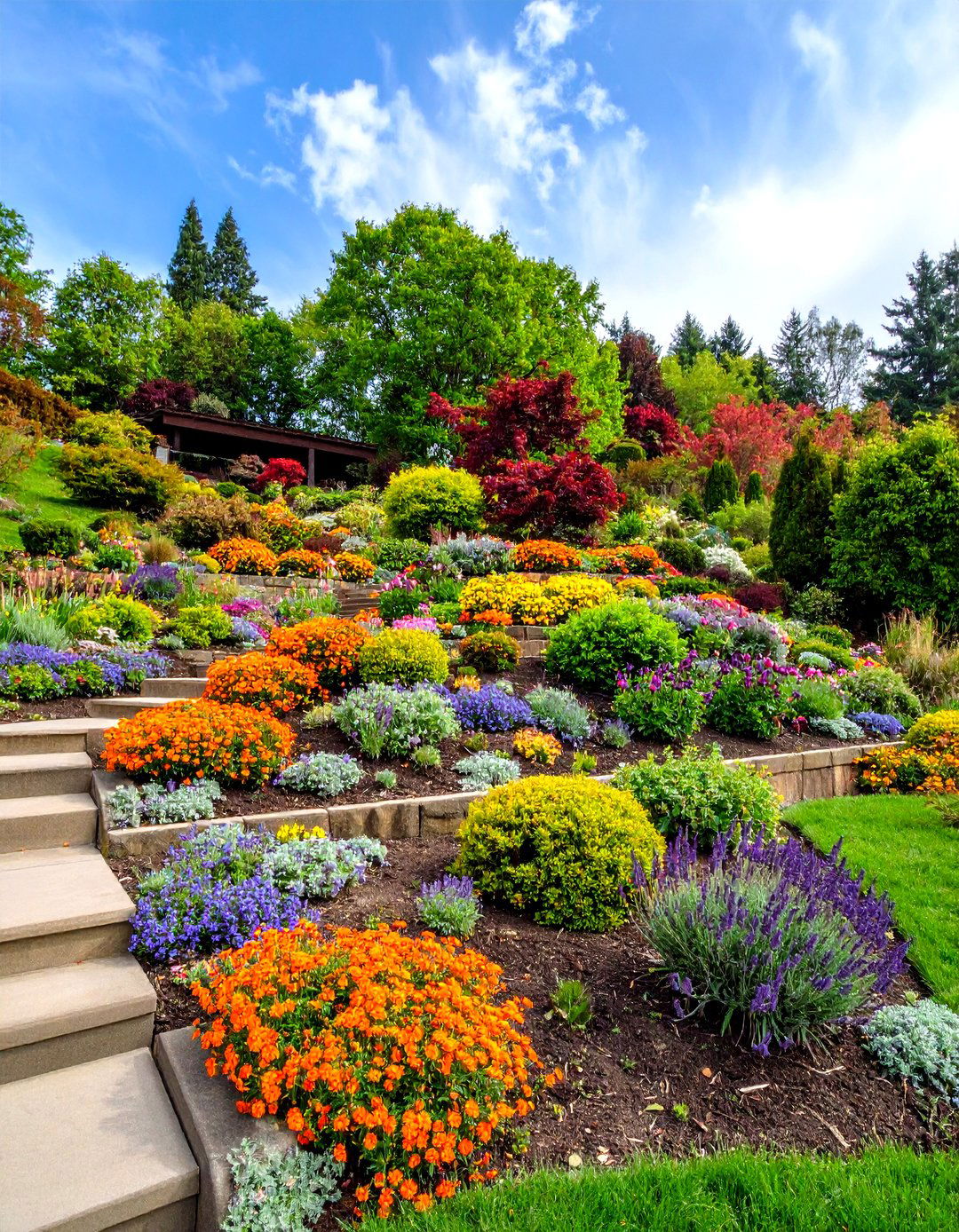
Cut “pockets” into the slope by excavating small terraces and filling with quality soil to establish shrubs and perennials that might otherwise wash away. This technique is ideal for deep-rooted plants—astilbes, hostas, and hydrangeas—that anchor soil and add vertical structure. Planting pockets require less excavation than full terraces and can be arranged in staggered patterns to create a natural hillside planting effect.
12. Ornamental Grass Swaths

Ornamental grasses like fountain grass, switchgrass, and muhly grass form dense root mats that lock soil in place on slopes, reducing erosion while providing movement and seasonal interest. Their feathery plumes sway in the breeze, offering a dynamic textural contrast to rock and hardscape elements. Grasses are low-maintenance, drought-tolerant once established, and can be left standing through winter for structural interest.
13. Woodland Underplanting
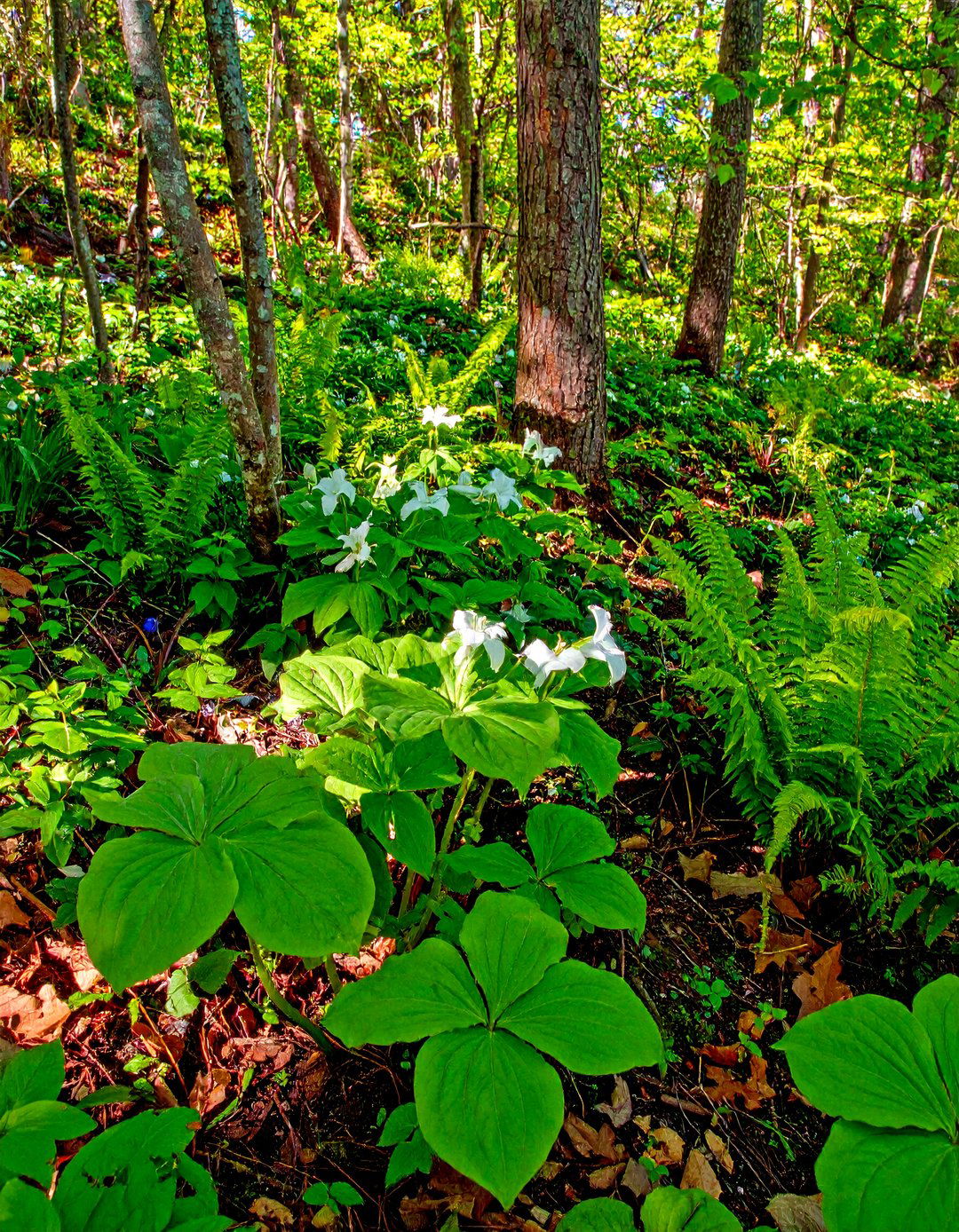
Embrace shaded slopes beneath tree canopies by underplanting with woodland favorites—maidenhair ferns, foamflower, trilliums, and mayapples—that thrive in craggy, less fertile soils. Limbed-up canopy trees improve light penetration and view corridors, while the underplanting mimics natural forest floors, creating a serene, fairytale-like setting. Use mulch to conserve moisture and suppress weeds, enhancing the woodland aesthetic.
14. Hillside Vegetable Terraces
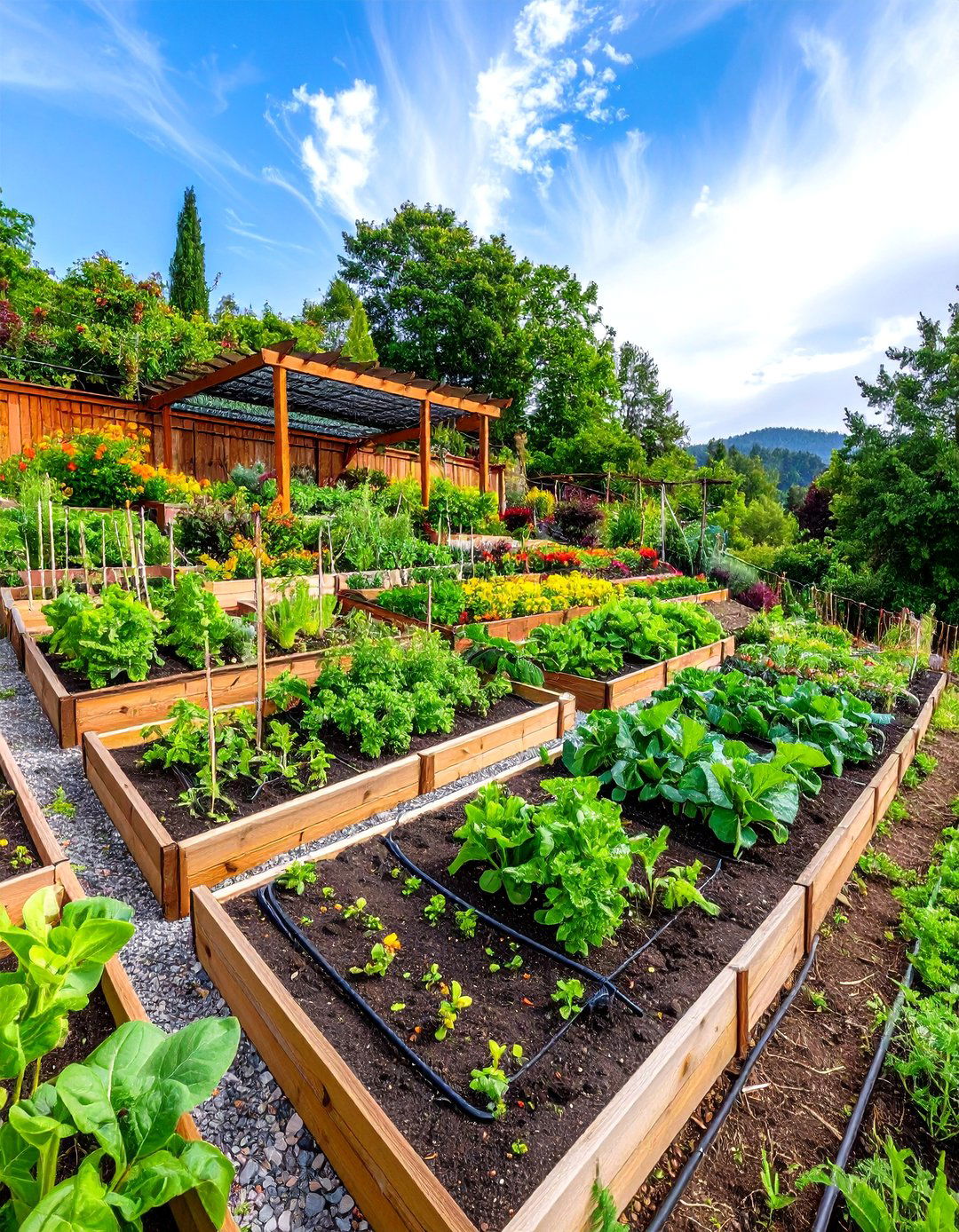
Create narrow terraces specifically for vegetable gardening on south-facing slopes to maximize sun exposure and passive drainage. Install drip irrigation lines along each terrace for efficient watering, and pave narrow pathways between beds for easy access and harvesting. Trellises on the uphill side support vining crops (like beans and peas), while lower beds host lettuces and root vegetables, optimizing microclimates for different plant types.
15. Retaining Wall Benches
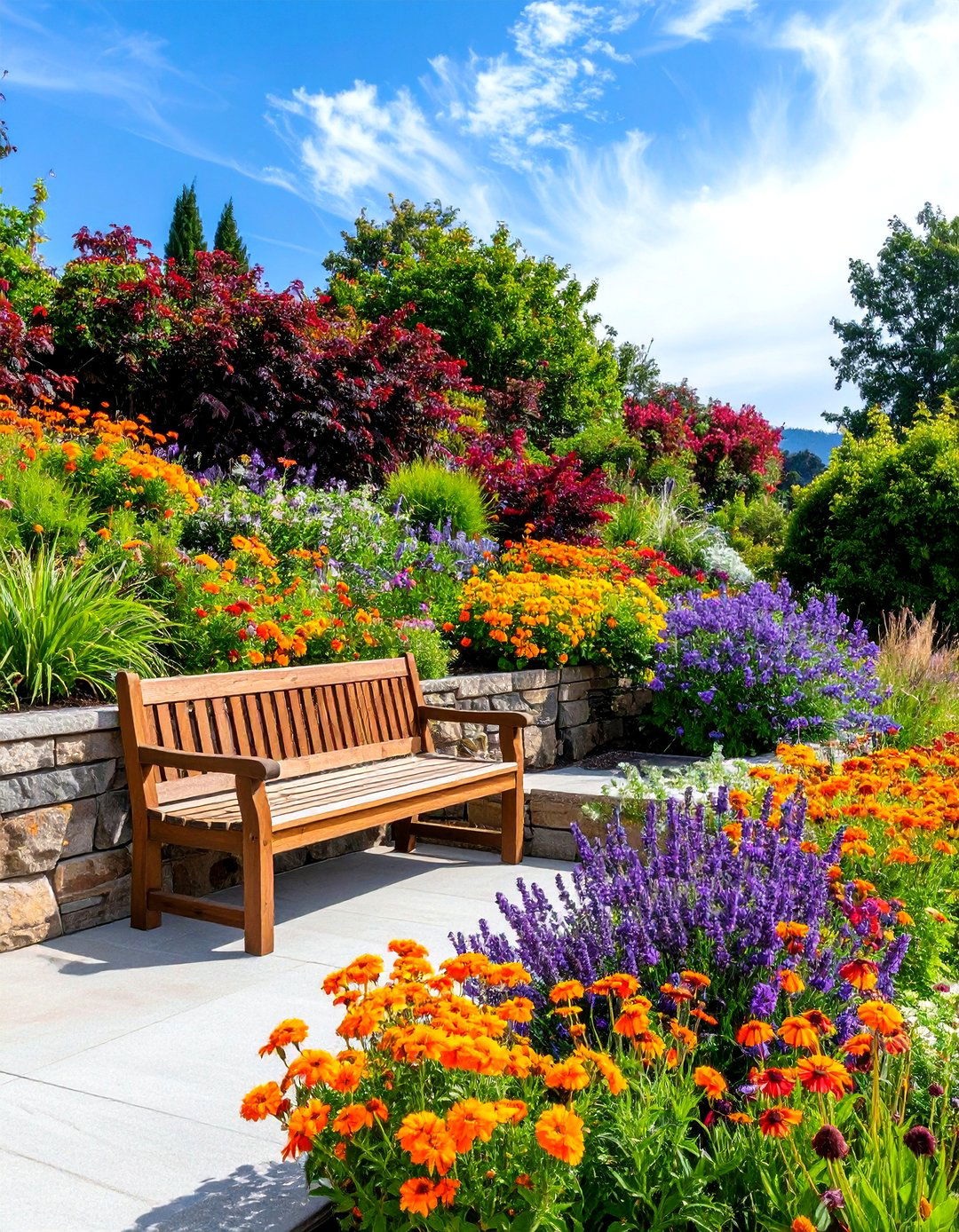
Integrate bench seating directly into terraced walls by extending wall caps to form seat ledges—perfect for creating rest spots with panoramic views. Curved seat walls add architectural elegance, and built-in storage compartments beneath the bench can house garden tools or cushions. Using the same materials for walls and benches ensures cohesive design, while strategic placement near garden focal points enhances both utility and aesthetics.
16. Vertical Garden Walls
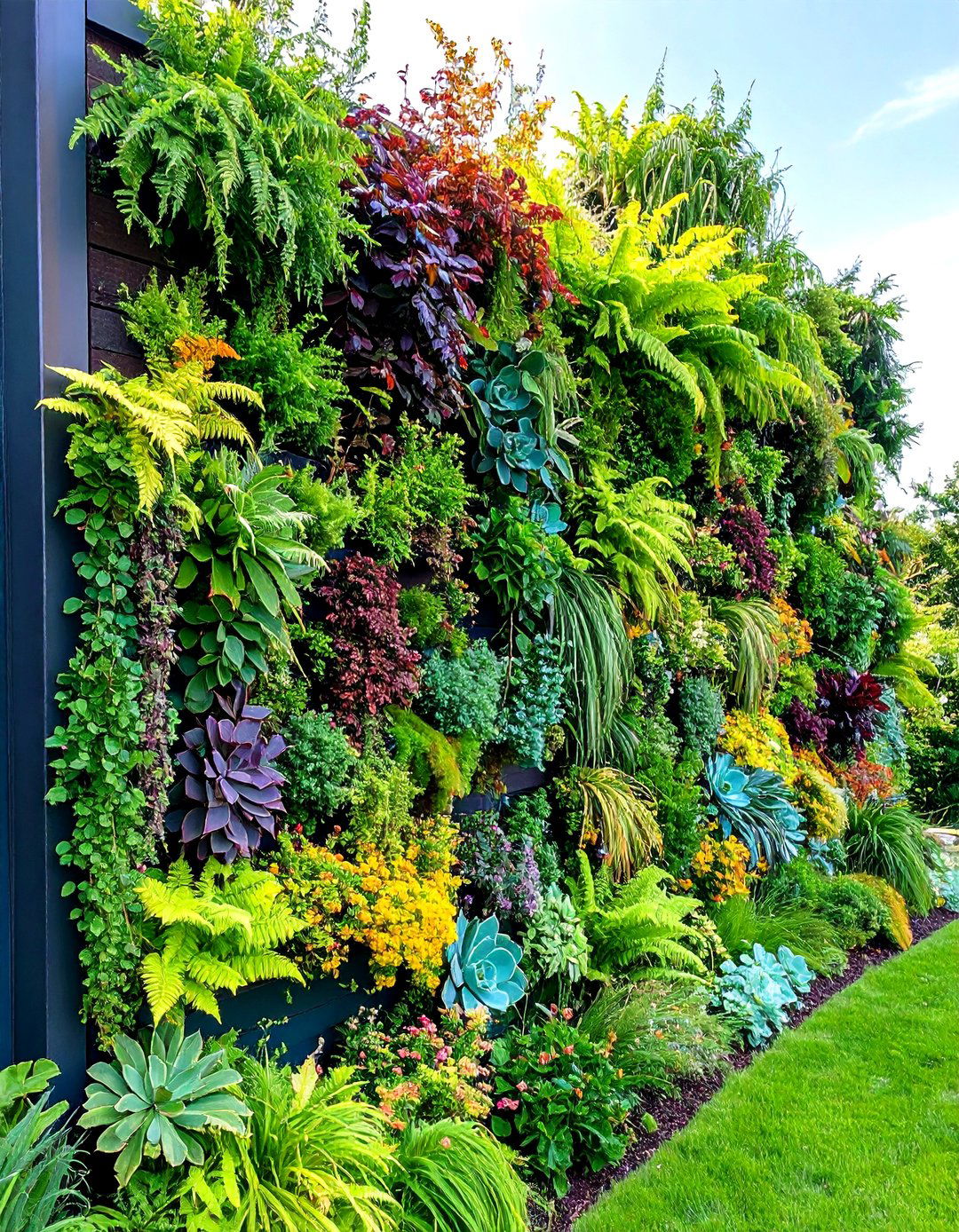
On steep or narrow slopes where horizontal space is limited, install vertical planters or living walls on retaining structures to add greenery without sacrificing ground area. Modular panel systems allow planting of ferns, succulents, or trailing vines that cascade down the wall, softening hard surfaces and improving insulation. Integrated irrigation and drainage systems ensure healthy growth, while lighting highlights foliage texture after dark.
17. Patterned Patio Steps
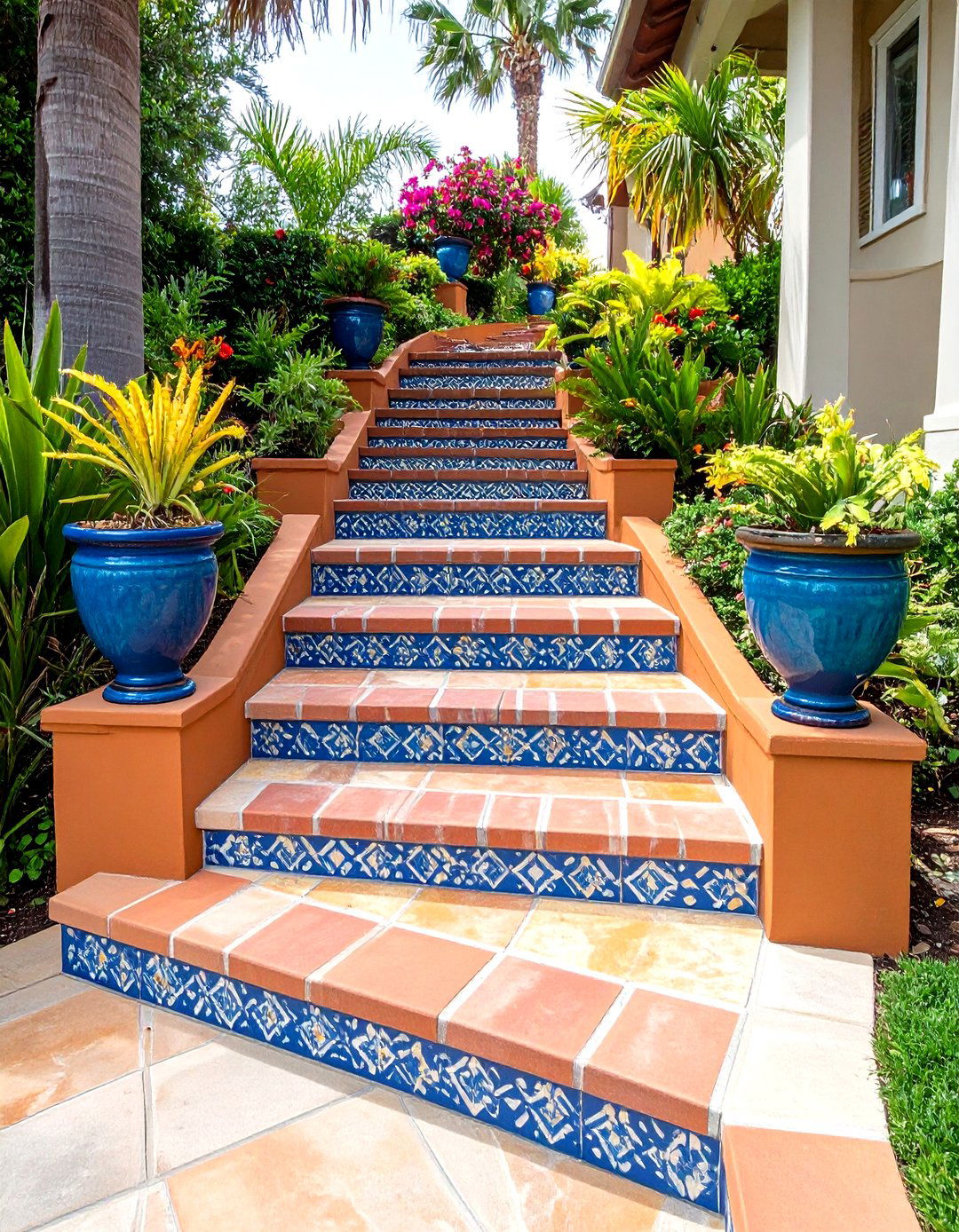
Convert sloped transitions into decorative focal points by surfacing steps with patterned tiles or stamped concrete to add color and texture. Contrasting grout lines or tile inlays can echo garden motifs, guiding the eye downhill and creating rhythm. Surround steps with planter edges or low walls to hold soil and plantings, blending functionality with artistic detail.
18. Container Tier Gardens
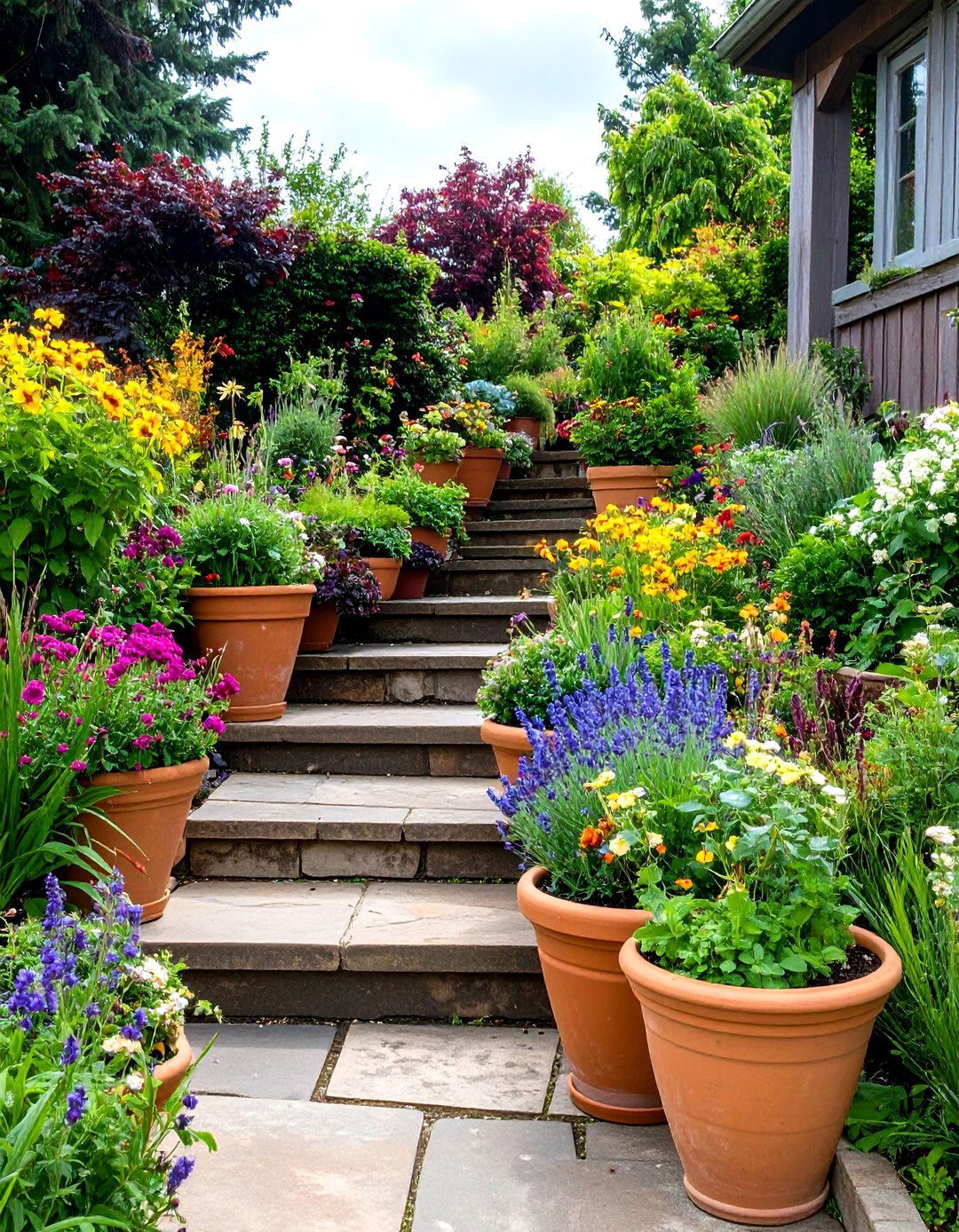
Line terraces or stair flanks with mismatched containers—earthenware pots, troughs, or galvanized tubs—filled with annuals, herbs, or small shrubs for flexible, eye-catching displays. Container arrangements can be swapped seasonally, enabling dynamic color changes and easy redesign without permanent planting. Use varying pot heights and textures to emphasize depth and soften rigid terrace edges.
19. Prairie Plant Slope
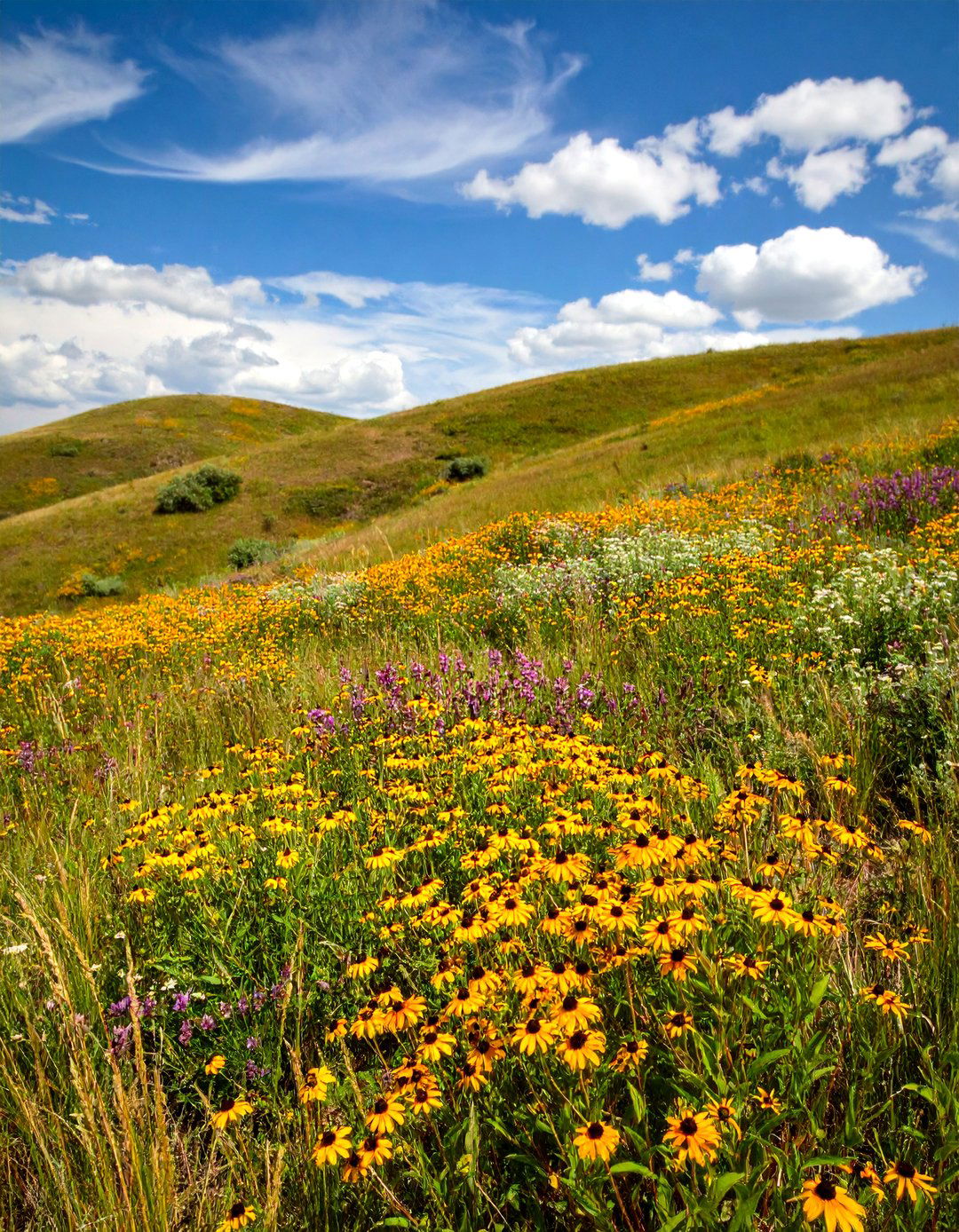
Mimic natural prairies on south-facing slopes by planting deep-rooted native grasses (e.g., little bluestem) alongside prairie flowers (like Echinacea and Rudbeckia) to create a low-maintenance meadow that stabilizes soil and supports pollinators. These ecosystems thrive on well-drained slopes, require minimal watering, and offer seasonal interest from spring blooms through autumn seed heads. A hay mulch layer aids seed germination and reduces competition from weeds.
20. Alpine Rock Gardens
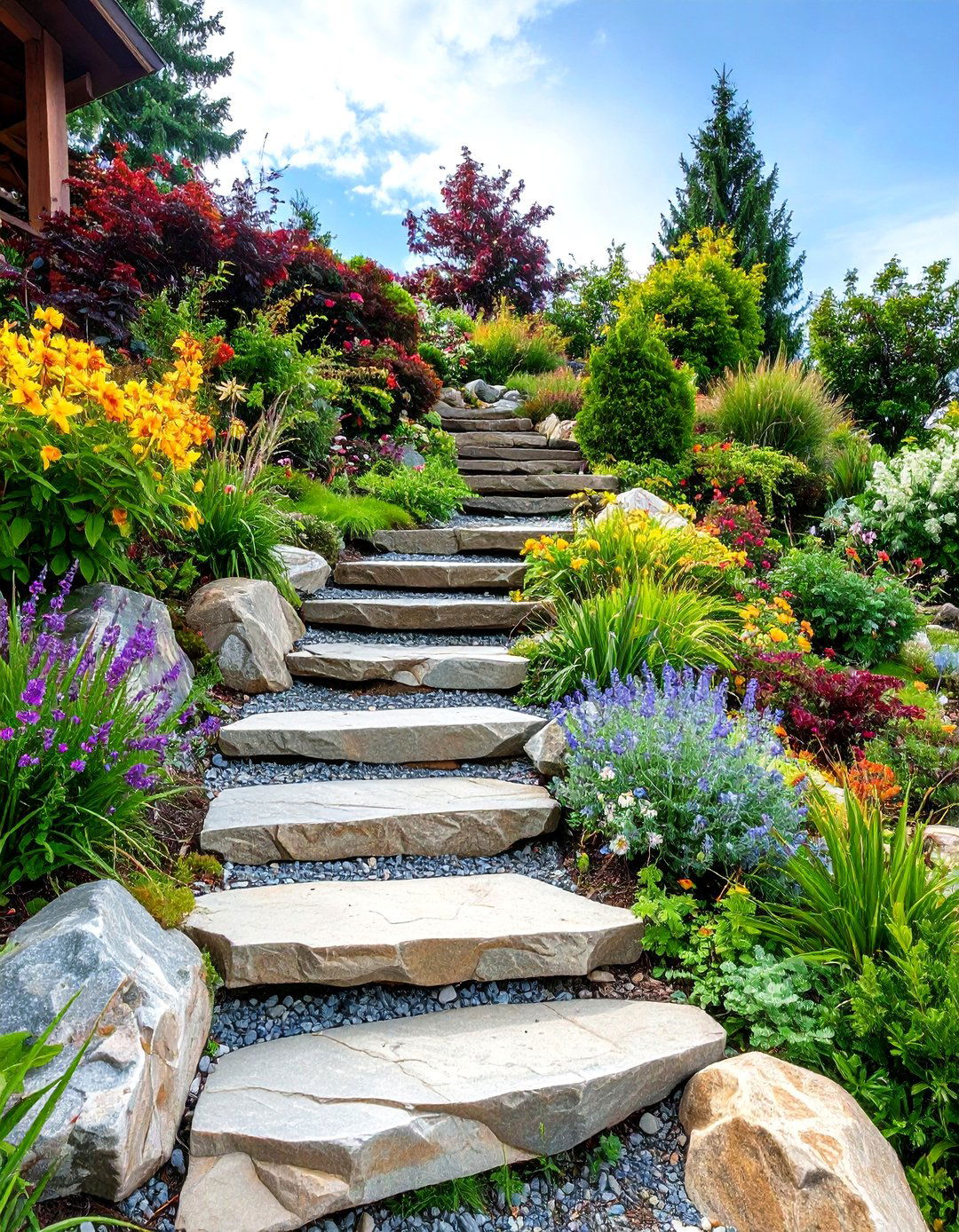
On rocky, scree-like slopes, emphasize existing stone by rearranging slabs into steps or ledges, then infill with pea gravel and plant alpine specialists—corydalis, saxifrages, and dwarf conifers—that flourish in crevices. Artificial hypertufa planters blend seamlessly with natural rock, while gravel mulch prevents runoff and unifies the palette. This low-water, low-care approach celebrates mountainous landscapes in miniature.
Conclusion:
By combining hardscape techniques—retaining walls, terraces, pathways, and seating—with strategic plant choices like groundcovers, grasses, and native species, you can transform any challenging slope into a functional and beautiful garden. Whether you opt for grand multi-level decks or simple planting pockets, each idea contributes to erosion control, ease of maintenance, and enhanced visual interest. Embrace the opportunities of your sloped site: let water features accentuate grade changes, and use tiered or vertical plantings to maximize both space and creativity. With thoughtful design and quality materials, your hillside can become a seamless extension of your home, offering serene views and diverse gardening possibilities.



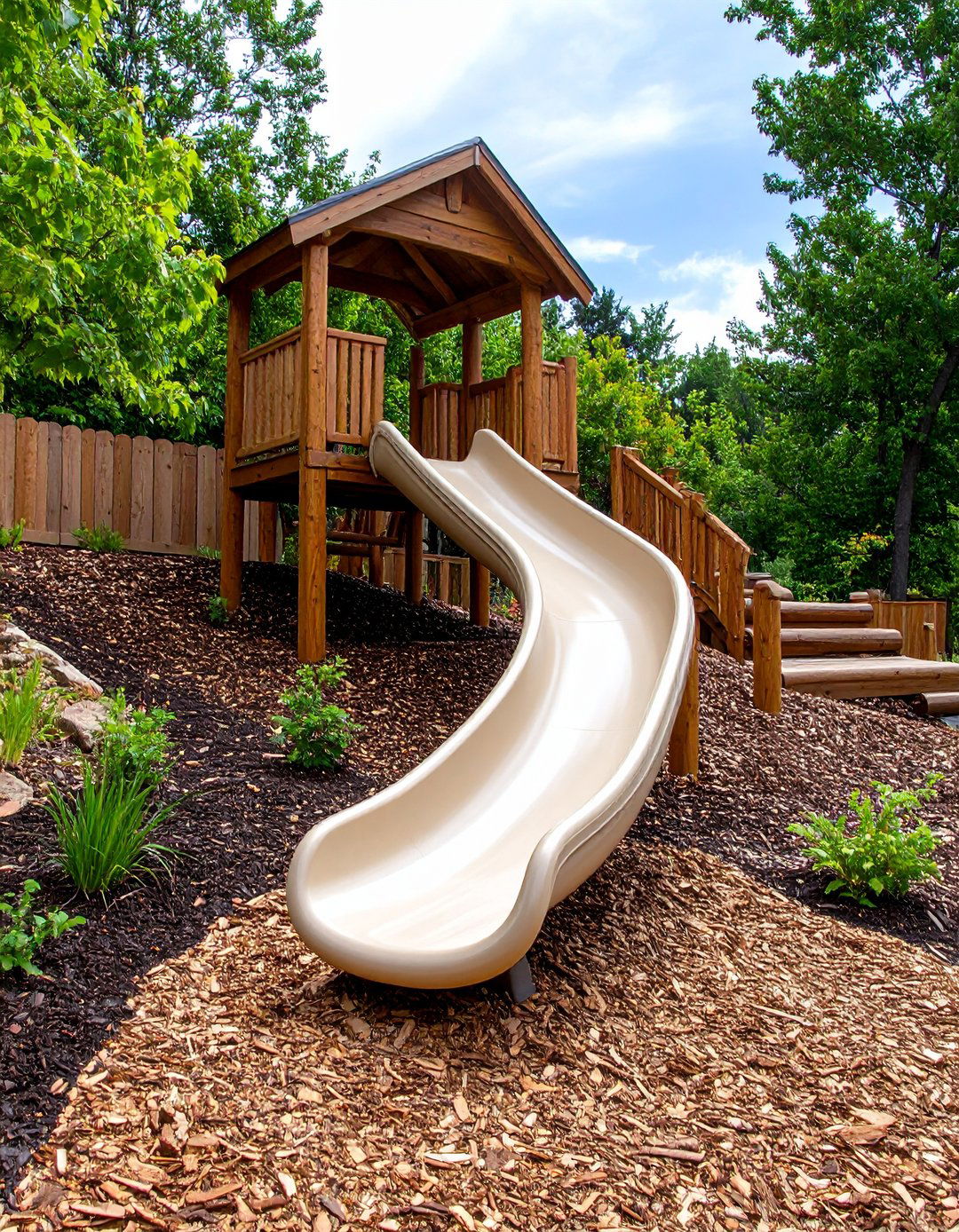
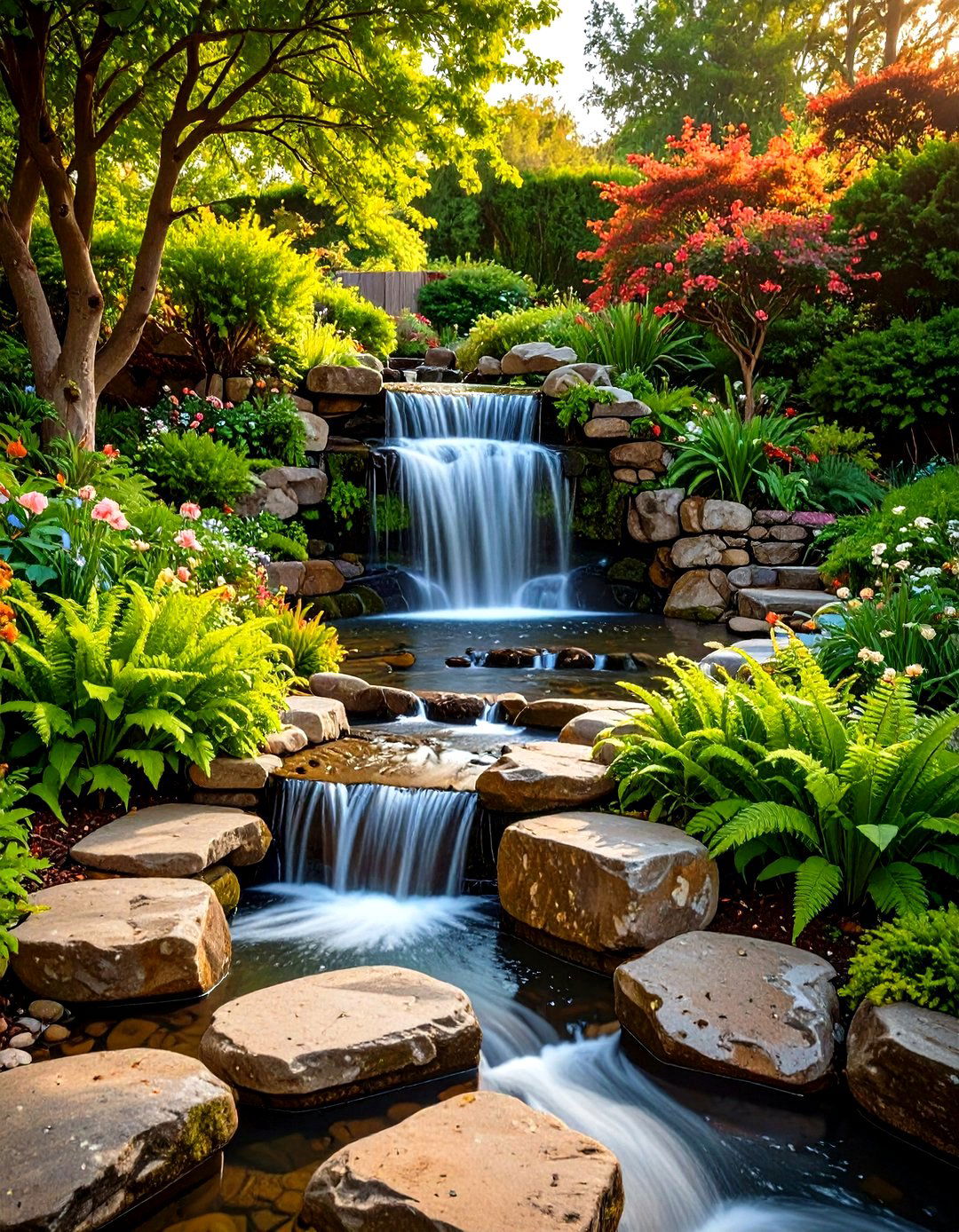
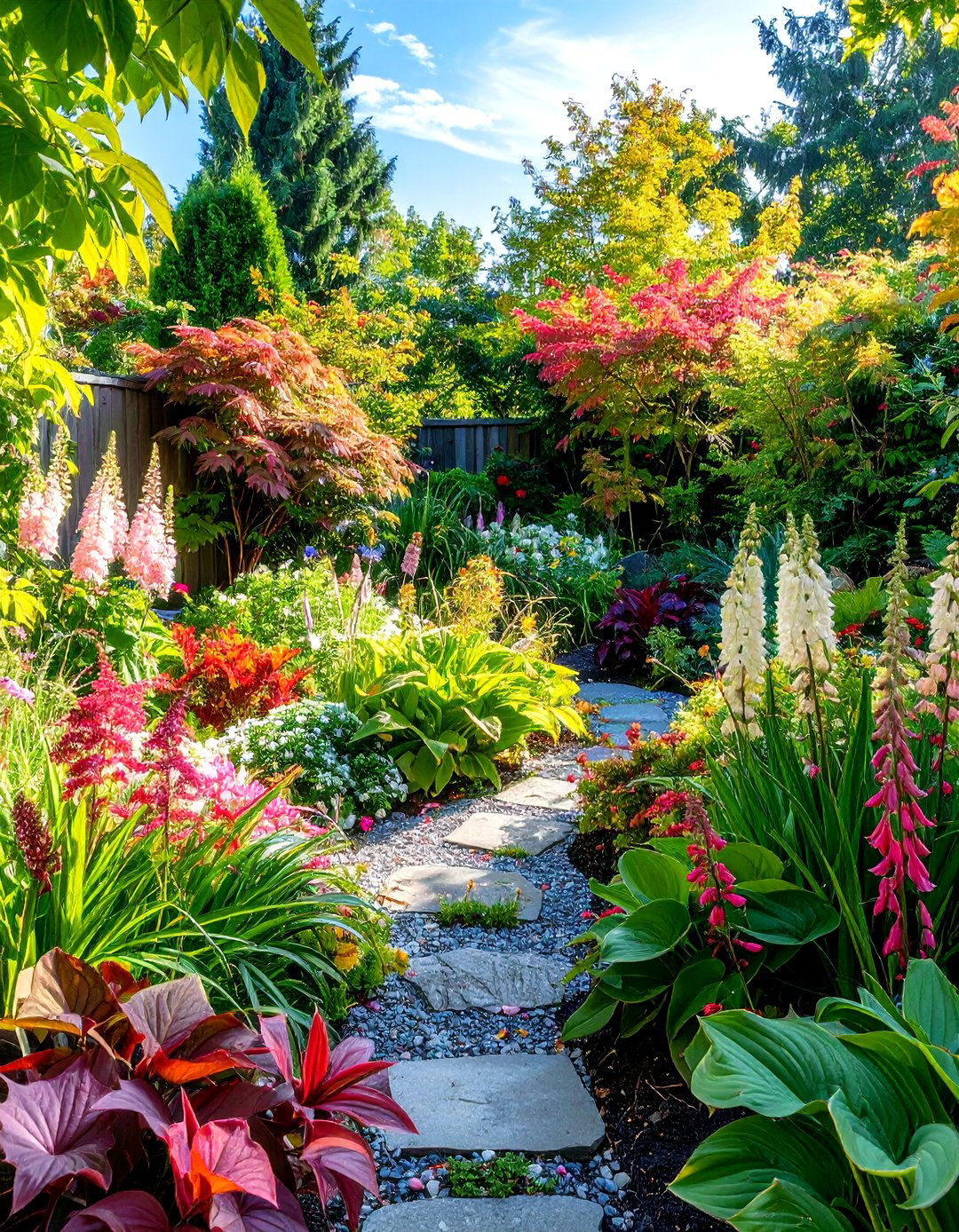
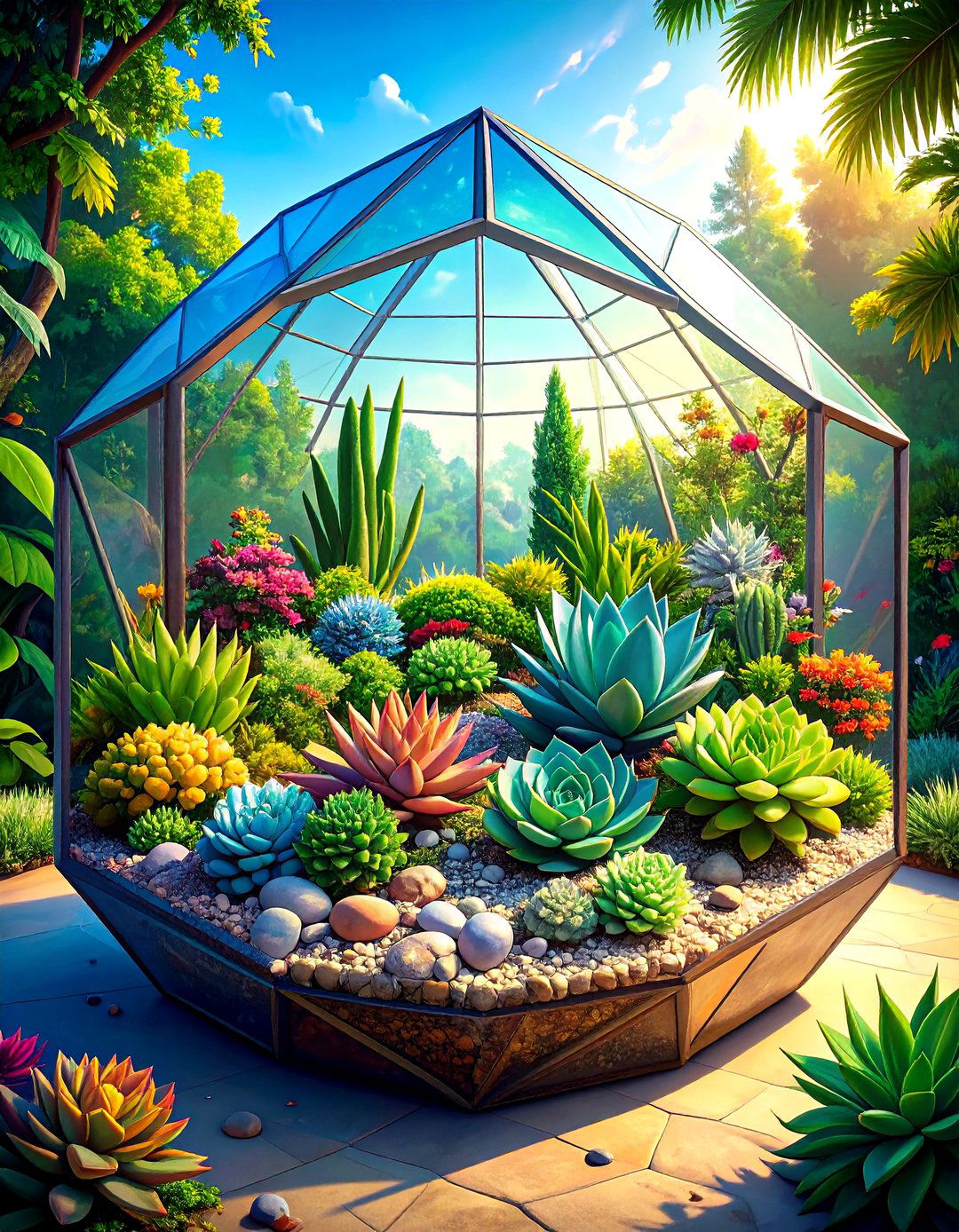
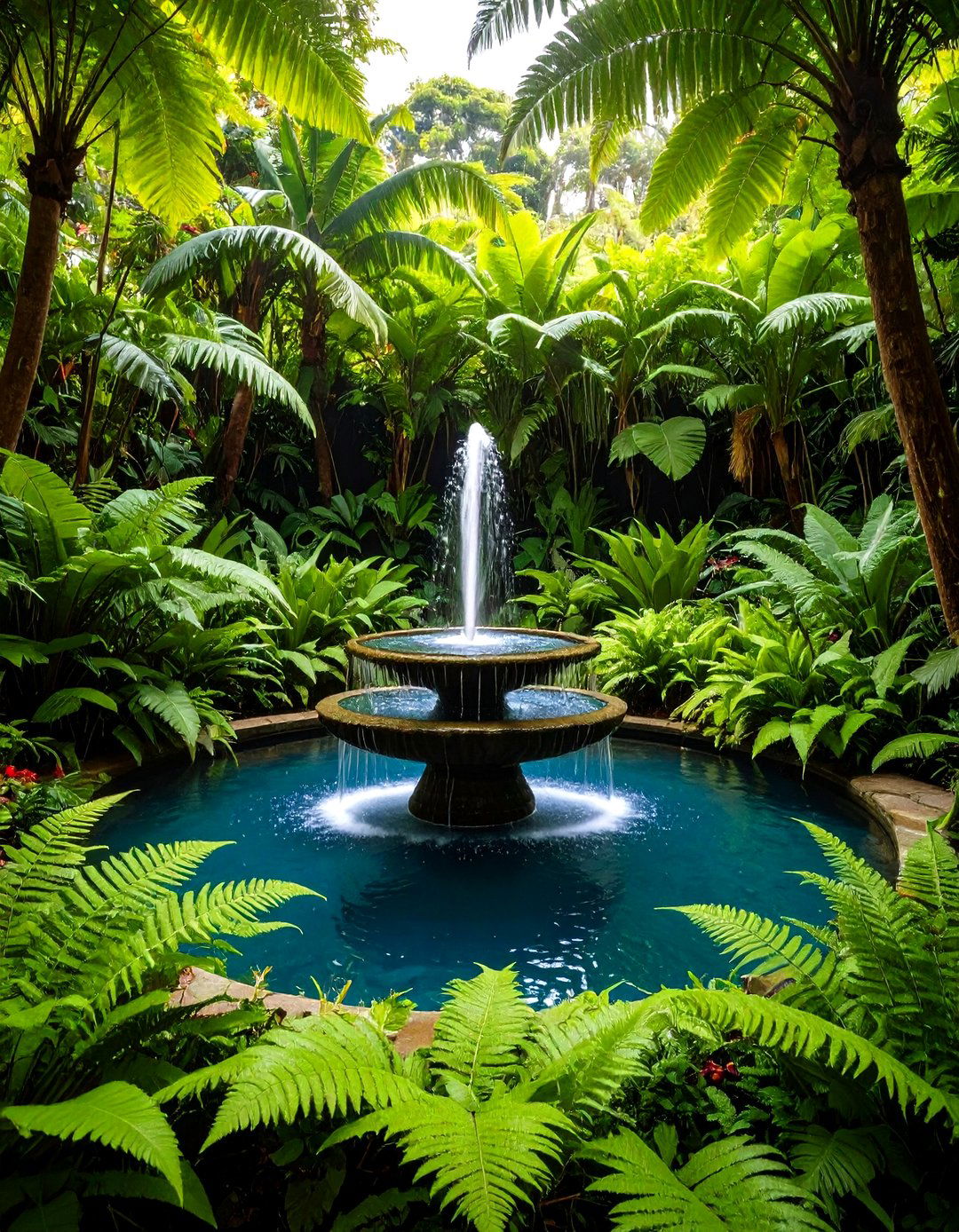
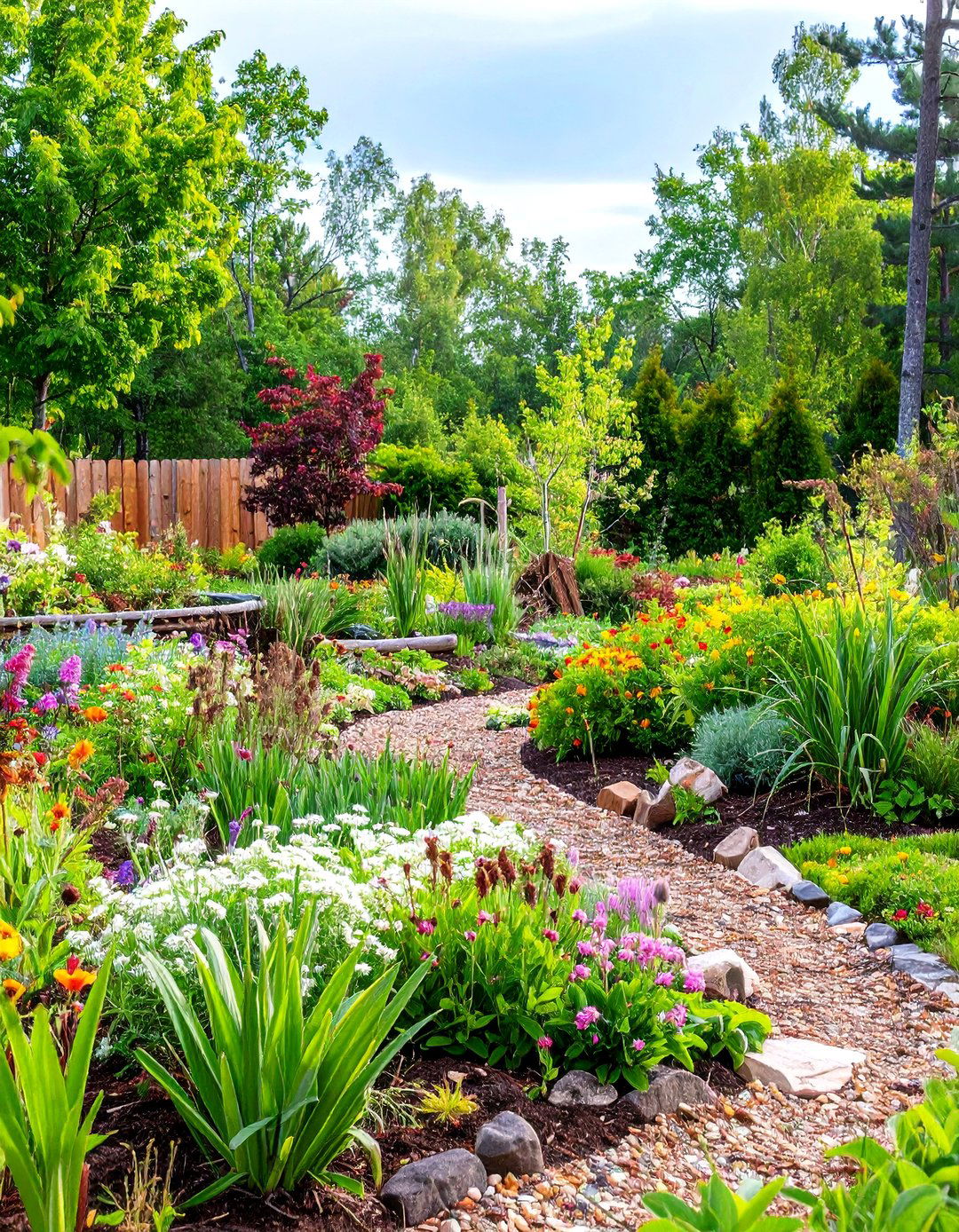
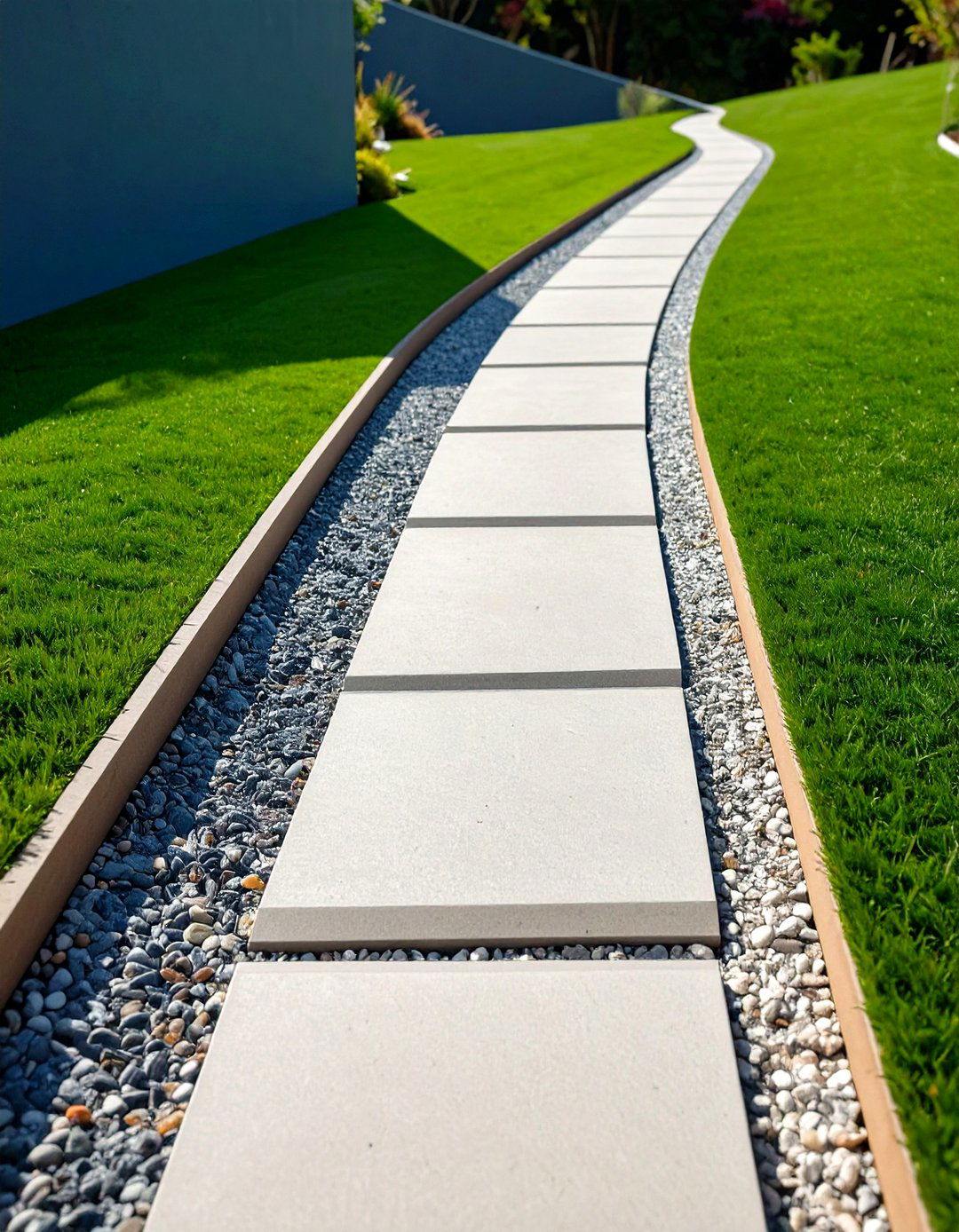
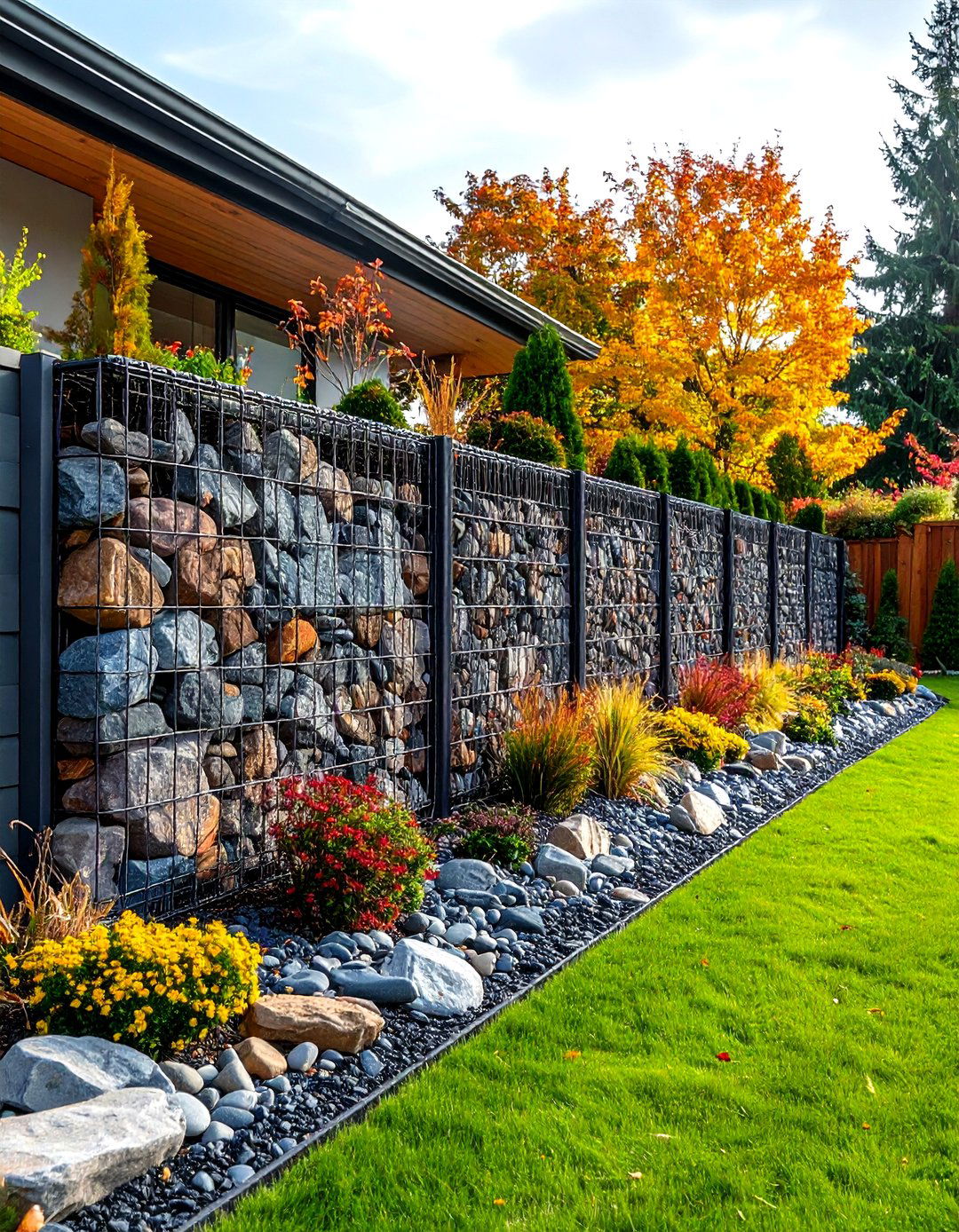

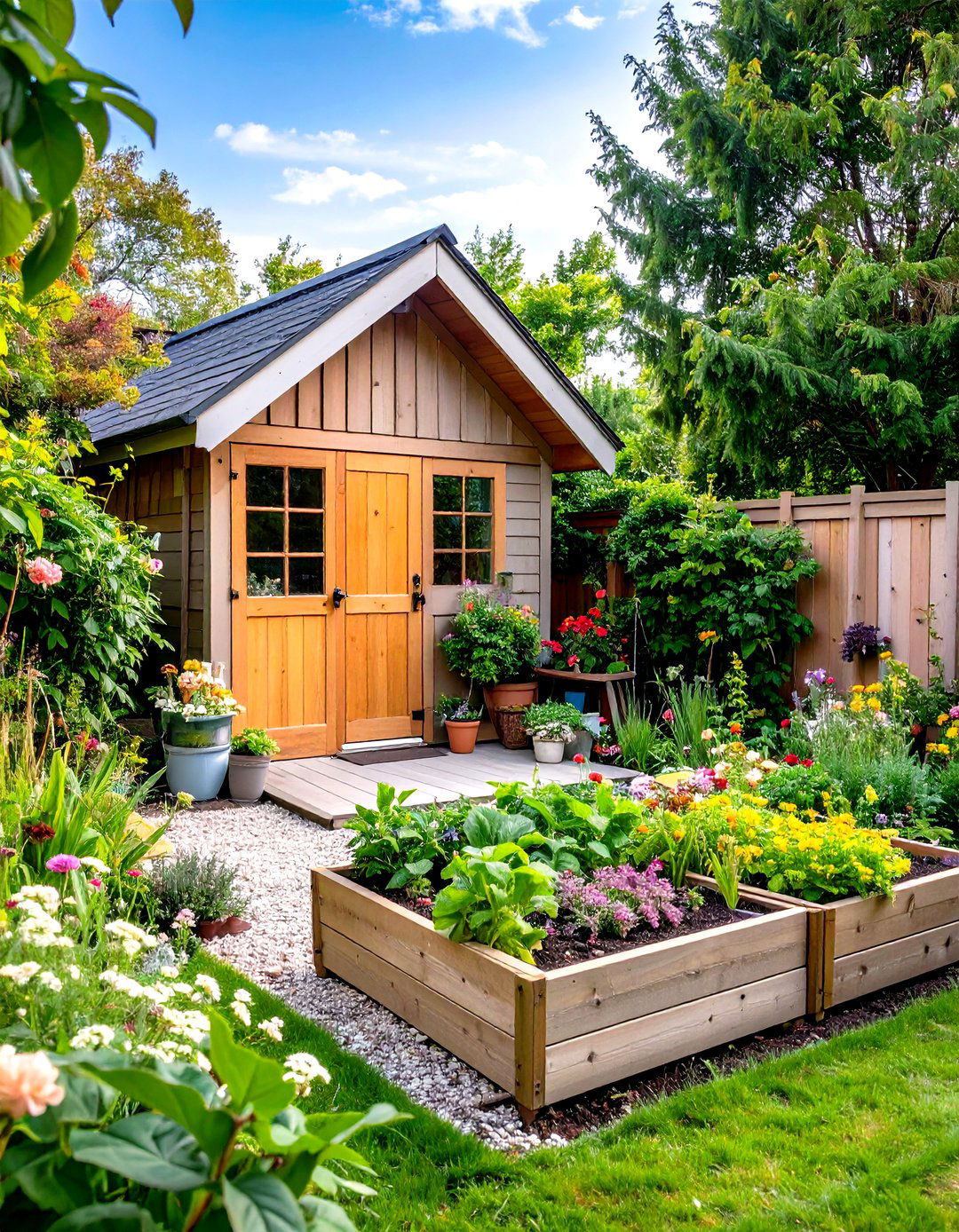
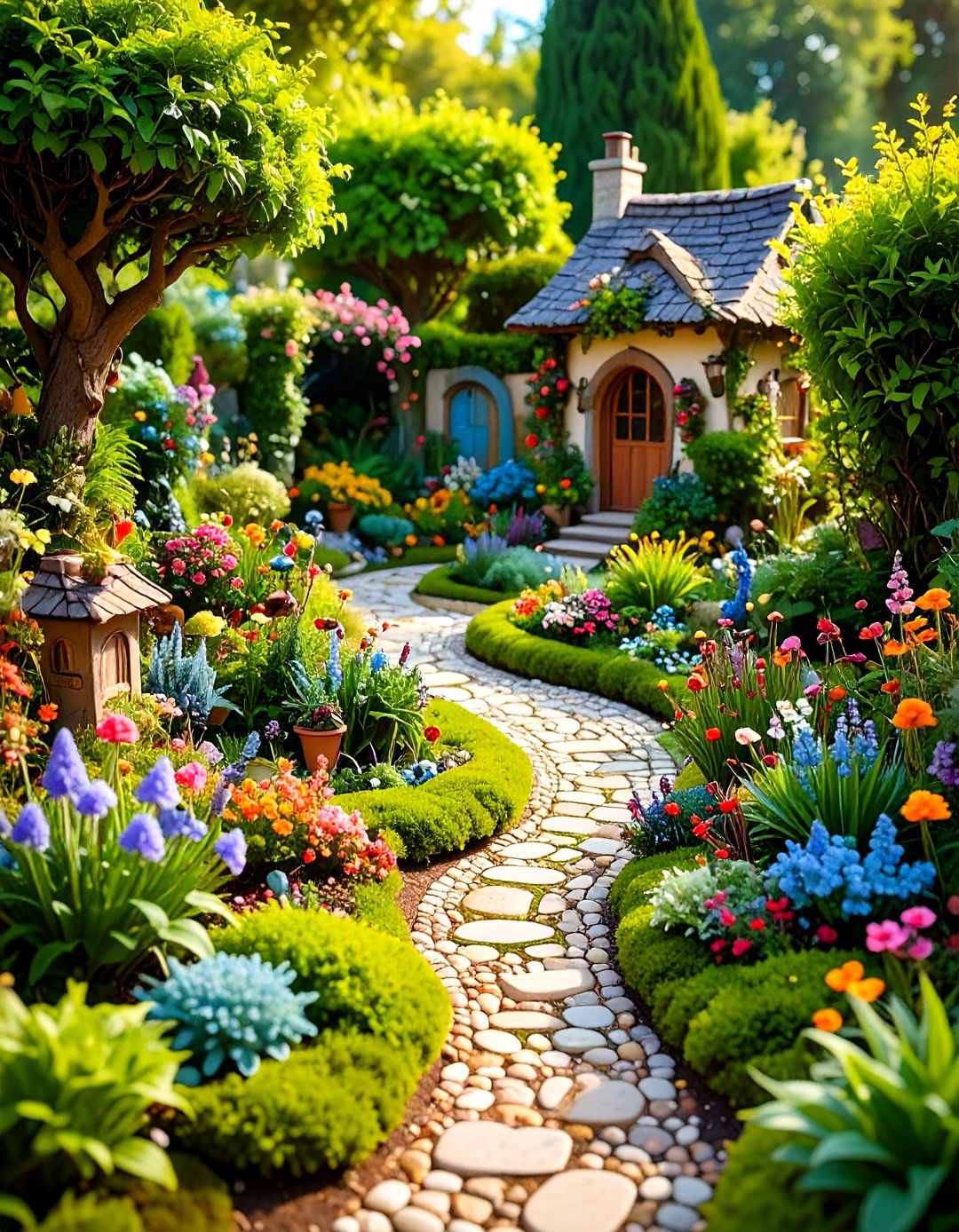

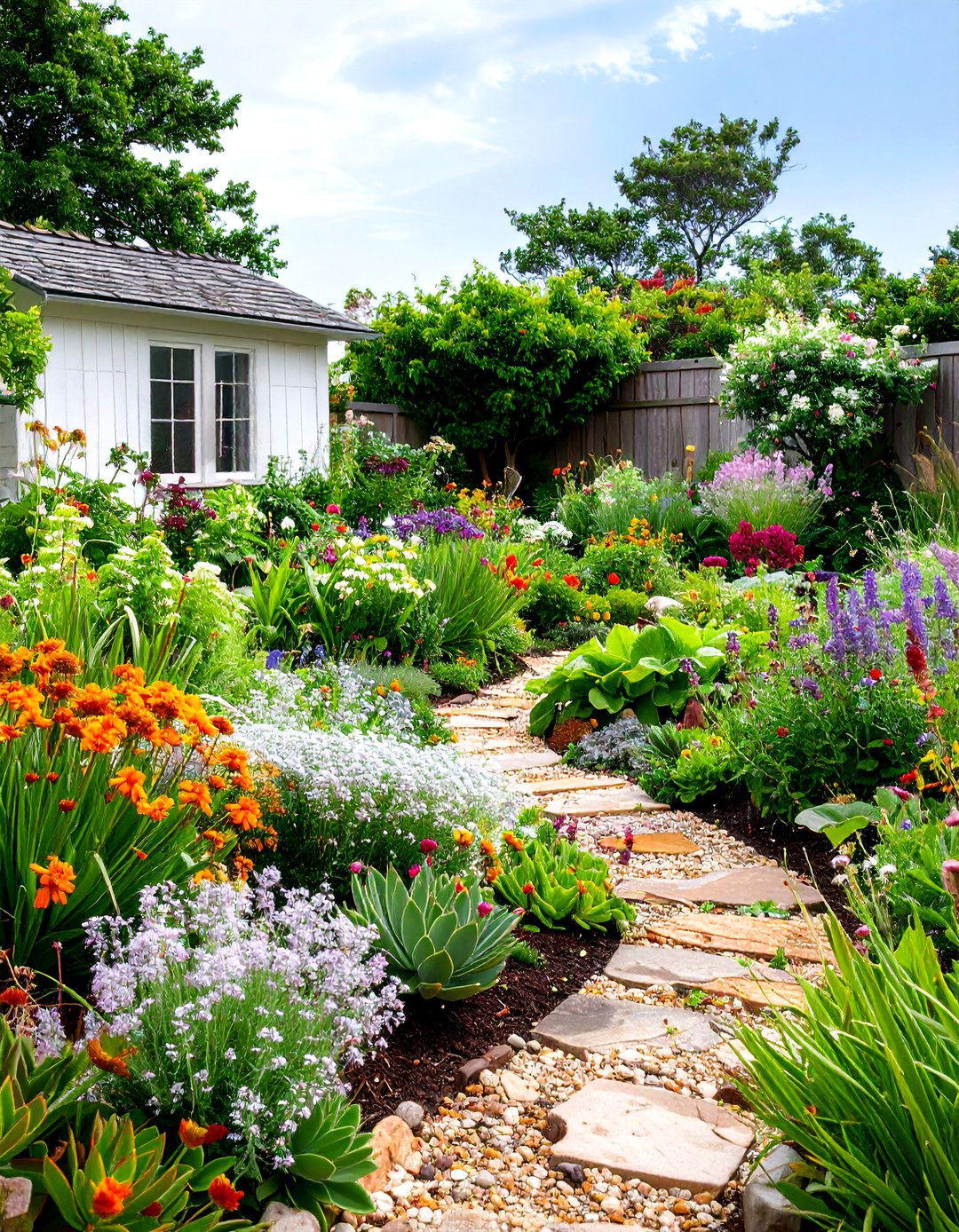

Leave a Reply